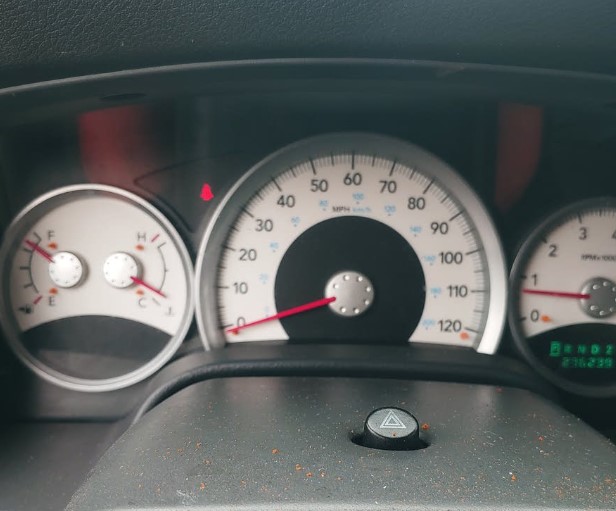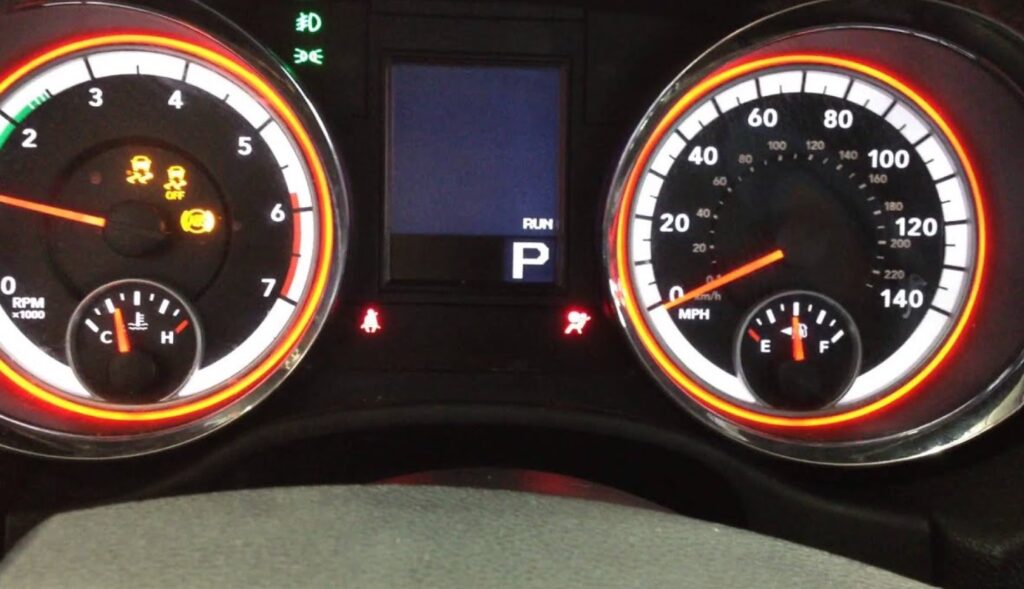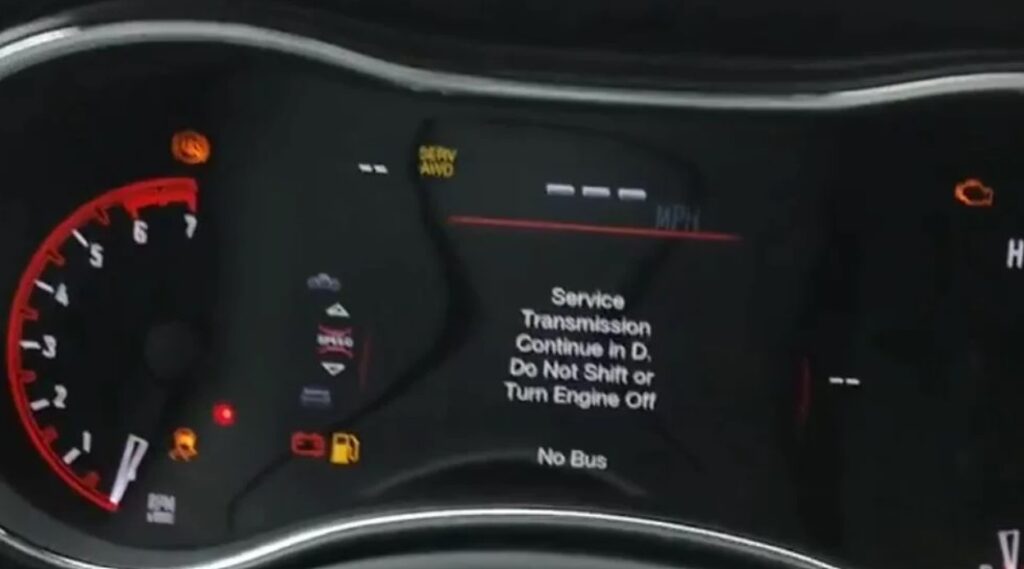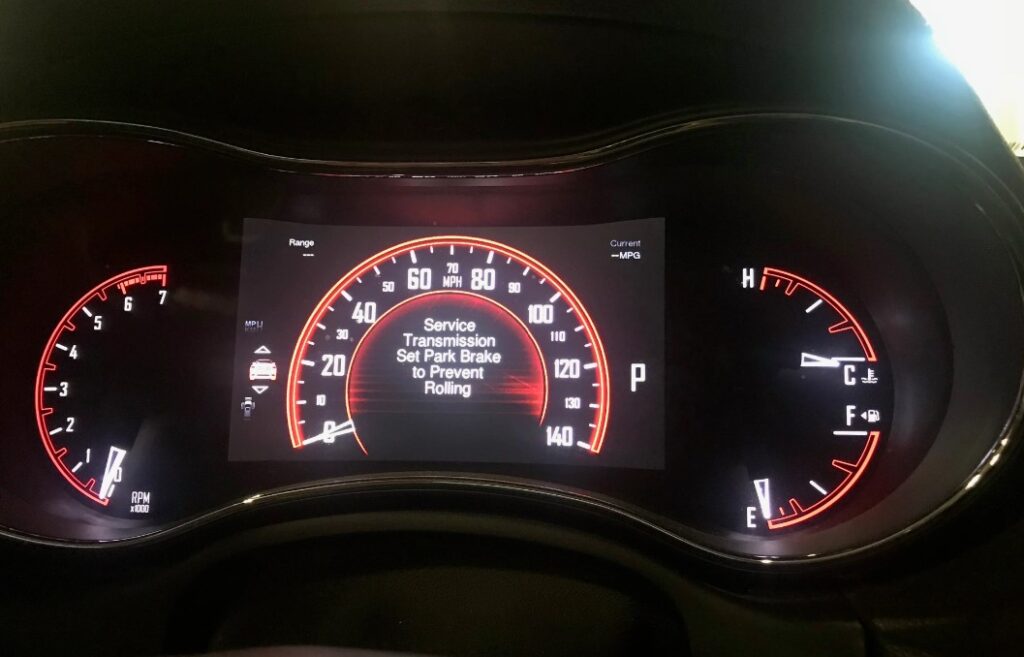How To Reset Check Engine Light Dodge Durango? 5 Steps
Are you looking for How To Reset Check Engine Light Dodge Durango? Resetting the Check Engine Light on a Dodge Durango is a process many car owners may need to undertake. This action is often necessary after repairs are made to rectify the issue that initially triggered the light. The process involves a few steps that are easy to follow, ensuring your Dodge Durango runs smoothly and efficiently.
Key Takeaways
- Understanding the steps to reset the Check Engine Light on a Dodge Durango.
- Recognizing the importance of addressing the underlying issue before resetting the light.
- Safety precautions and tips for a successful reset process.
How To Reset Check Engine Light Dodge Durango?
Resetting the Check Engine Light on a Dodge Durango can be a straightforward process if you have the right tools and follow these steps carefully:

1. Diagnose the Issue
- Use an OBD-II Scanner: Before resetting the Check Engine Light, it’s crucial to first diagnose the issue causing it. This is done using an On-Board Diagnostics II (OBD-II) scanner. The OBD-II port in a Dodge Durango is typically located under the dashboard, near the steering column.
- Read the Error Codes: Connect the scanner to the port, turn on the ignition to the “ON” position (without starting the engine), and follow the scanner’s instructions to read the error codes.
- Interpret the Codes: Each code will give you information about the issue. For instance, a code starting with ‘P’ is related to the powertrain. Refer to the vehicle’s manual or an online database for code meanings.
2. Address the Root Cause
- Repair or Fix the Issue: Once you know what’s causing the Check Engine Light to activate, you need to fix this issue. This might involve simple actions like tightening a loose gas cap or more complex repairs like replacing a faulty oxygen sensor.
- Professional Assistance: If the repair is beyond your skill level, it’s advisable to seek help from a professional mechanic.
3. Reset the Check Engine Light
- Using the OBD-II Scanner: With the issue fixed, reconnect the scanner to the OBD-II port. Turn the ignition to the “ON” position. Navigate through the scanner’s menu to find the option to erase or clear the codes. This action should reset the Check Engine Light.
- Alternative Method (Not Recommended): Another method to reset the light is to disconnect the car battery for a short period. However, this method is not recommended as it can disrupt other electronic settings in the vehicle, like the radio or clock.
4. Check If the Light Turns Off
- Start the Engine: After clearing the codes, start your Durango’s engine. The Check Engine Light should no longer be illuminated.
- Monitor the Vehicle: Pay attention to the vehicle’s performance following the reset. If the light comes back on, it indicates that the problem hasn’t been fully resolved or there’s a new issue.
5. Follow-Up
- Monitor Over Several Driving Cycles: Even after resetting, it’s important to monitor the vehicle over several driving cycles. Some issues may only be detected under specific driving conditions.
- Seek Professional Help if Necessary: If the Check Engine Light reappears, it’s a sign that further diagnostic work is needed. In such cases, consult with a professional mechanic.
Remember, the Check Engine Light is an important indicator of your vehicle’s health. While resetting the light might turn it off temporarily, it’s crucial to address the underlying issue to avoid potential long-term damage to your vehicle.
Reasons for Check Engine Light Activation
The Check Engine Light in a Dodge Durango can activate for various reasons. These range from minor issues like a loose gas cap to more serious problems such as engine malfunction.
Common Triggers
- Loose or Faulty Gas Cap: Often a quick and easy fix.
- Oxygen Sensor Malfunction: This can impact the vehicle’s fuel efficiency.
Addressing the Issue
- Consult a Professional: If you’re unsure of the problem, consult a mechanic.
- Use Diagnostic Tools: OBD-II scanners can help identify the specific error code.
Preventative Measures
Preventive maintenance is crucial in avoiding the activation of the Check Engine Light.
Routine Checks
- Regularly check and replace the vehicle’s fluids.
- Inspect belts and hoses for wear and tear.
Diagnostic Tools
- Invest in a quality OBD-II scanner to regularly check for potential issues.
Dodge Durango Maintenance Tips
Maintaining your Dodge Durango is essential for its longevity and performance.

Regular Service
- Follow the manufacturer’s service schedule.
- Regular oil changes and filter replacements are crucial.
Best Practices
- Drive responsibly to reduce wear and tear.
- Keep up with tire maintenance for optimal performance.
Advanced Troubleshooting
Sometimes, the issue may require more advanced troubleshooting techniques.
Professional Assistance
- Seek help from a certified Dodge mechanic for complex issues.
- Use specialized diagnostic tools for a thorough check.
Understanding Error Codes
- Familiarize yourself with common Dodge Durango error codes for better insight.
Understanding Error Codes
When the Check Engine Light illuminates in your Dodge Durango, it generates an error code that pinpoints the issue. These codes are critical for diagnosing problems accurately.
An OBD-II scanner can be used to retrieve these codes, which typically begin with a letter followed by numbers, like P0300. Each code has a specific meaning, detailing problems from emissions systems to engine misfires.

Understanding these codes is essential. For instance, codes like P0171 indicate a lean fuel mixture, while P0301 signifies a misfire in cylinder 1.
Familiarizing yourself with common Dodge Durango error codes can help you identify issues quickly and accurately. It’s important to research or consult a professional for the exact meaning and recommended solutions for each code.
After Resetting the Check Engine Light
Once you’ve reset the Check Engine Light on your Dodge Durango, it’s crucial to monitor the vehicle closely. If the light turns back on, it indicates that the issue hasn’t been resolved or there’s a new problem. Keep an eye out for any unusual behavior in your vehicle, such as strange noises, reduced performance, or fuel-efficiency issues.
In some cases, the Check Engine Light might take a few driving cycles to reappear after a reset. This delay happens because certain conditions need to be met before the onboard diagnostics system runs a complete check. Therefore, even if the light doesn’t come back on immediately, it doesn’t necessarily mean that the issue is completely resolved.
Long-Term Maintenance Strategies
Consistent and thorough maintenance is key to preventing issues that can trigger the Check Engine Light in your Dodge Durango. Establish a regular maintenance schedule that goes beyond oil changes and tire rotations. This includes checking the brake system, replacing spark plugs, and inspecting the suspension and exhaust systems.

Additionally, pay attention to your Durango’s specific needs based on its age and your driving habits. Older vehicles might require more frequent checks and part replacements.
If you often drive in harsh conditions, like extreme temperatures or off-road, your vehicle will need more rigorous maintenance to prevent potential issues.
Diagnostic Tools and Their Usage
Beyond the basic OBD-II scanner, there are other diagnostic tools available that provide a deeper insight into your vehicle’s health. Advanced scanners can read more than just the engine codes, including transmission issues, ABS system problems, and more. Investing in these tools or seeking services that use them can be beneficial for thorough diagnostics.
It’s also important to understand how to interpret the data provided by these tools. They can offer real-time data on engine performance, fuel efficiency, and other vital systems. Regular checks with these tools can help you catch issues early, preventing more severe problems down the line.
Environmental Factors Affecting Your Dodge Durango
The environment in which you drive your Dodge Durango can significantly impact its performance and the likelihood of triggering the Check Engine Light. Factors like extreme temperatures, high humidity, rough terrain, and even the quality of fuel you use can affect your vehicle’s health.
In colder climates, for instance, your vehicle’s battery and fluids are more susceptible to issues. In contrast, high temperatures can lead to overheating and increased wear on the engine. Understanding these environmental factors and adjusting your maintenance routine accordingly can help keep your Durango in top condition.
How Do You Turn Off The Check Engine Light On A Dodge Durango?
Turning off the Check Engine Light on a Dodge Durango involves addressing the issue that triggered the light and then resetting it. The process usually requires the use of an OBD-II scanner. Here’s how you can do it:

- Diagnose the Issue: Use an OBD-II scanner to read the error codes. These codes will help identify what caused the Check Engine Light to turn on.
- Repair the Problem: Once the issue is identified, perform the necessary repairs. This could range from tightening a gas cap to replacing a faulty oxygen sensor.
- Reset the Light: After the repair, connect the OBD-II scanner and use it to clear the error codes. This should turn off the Check Engine Light.
If you don’t have access to a scanner, a professional mechanic can perform these steps for you. It’s crucial to address the underlying issue before attempting to turn off the light, as ignoring it could lead to more severe problems in the future.
How Do I Reset My Check Engine Light Myself?
Resetting the Check Engine Light on your own is possible but should be done with caution. The simplest way is by using an OBD-II scanner. Here’s a step-by-step guide:

- Connect the Scanner: Locate the OBD-II port in your Durango, usually found under the dashboard on the driver’s side. Connect your scanner to this port.
- Follow Scanner Instructions: Turn on your vehicle’s ignition to the “On” position but don’t start the engine. Follow the instructions on your scanner to locate the option to clear or reset the Check Engine Light.
- Disconnect the Scanner: Once the light is reset, disconnect the scanner and turn off the ignition.
Remember, resetting the light without addressing the underlying issue is not recommended. If the problem persists, the light will likely come back on.
Does Check Engine Light Have To Be Reset Itself?
The Check Engine Light may reset itself if the issue that caused it is resolved and no longer detected by the vehicle’s onboard diagnostic system.
This usually occurs over several driving cycles. A driving cycle typically involves starting the engine, driving the vehicle, and then turning it off. However, there are a few points to consider:
- Nature of the Issue: Some problems, especially those that are intermittent, may cause the light to turn off once they’re no longer present. For example, if a loose gas cap is tightened, the light might go off after a few driving cycles.
- Persistent Problems: For more persistent issues, the light is unlikely to reset itself and will require manual resetting using an OBD-II scanner.
- Professional Advice: If you’re unsure whether the issue has been resolved, it’s best to consult with a professional mechanic. They can perform a thorough diagnosis and ensure that resetting the light is appropriate.
It’s important to understand that the Check Engine Light is a critical indicator of your vehicle’s health. Ignoring it or resetting it without resolving the problem can lead to more significant issues.
Conclusion
Resetting the Check Engine Light on a Dodge Durango is a necessary skill for owners. It’s vital to address the root cause of the issue before attempting a reset. Regular maintenance and understanding your vehicle’s needs are key to avoiding such problems in the future. By following these steps and tips, you can ensure your Dodge Durango runs efficiently and safely.
Top FAQ’s
How can I check the error code myself without a scanner?
Without an OBD-II scanner, it’s challenging to accurately determine the specific error code. Some vehicles have a built-in self-diagnostic procedure that can be activated, but for accurate results, using a scanner is recommended.
Can regular maintenance prevent the Check Engine Light from coming on?
Regular maintenance can significantly reduce the likelihood of issues that trigger the Check Engine Light. This includes routine checks and replacements of fluids, filters, and other critical components.
What should I do if the Check Engine Light comes back on after a reset?
If the light reappears, it indicates that the issue wasn’t fully resolved or a new problem has arisen. It’s advisable to get a professional diagnostic check to identify and fix the underlying issue.
How do I know if the Check Engine Light is a false alarm?
Sometimes, the light can be triggered by temporary or minor issues. Using an OBD-II scanner to read the error code is the best way to determine if it’s a false alarm or a real issue.
Will disconnecting the battery reset the Check Engine Light on a Dodge Durango?
Disconnecting the battery for a short period can reset the light, but it’s not a recommended method as it can affect other vehicle settings and systems.

Welcome to the exhilarating world of Matt Rex, a professional car racer turned renowned vehicle enthusiast. Immerse yourself in his captivating blog as he shares heart-pounding adventures, expert reviews, and valuable insights on cars, trucks, jets, and more. Fuel your passion for speed and discover the beauty of vehicles through Matt’s engaging stories and meticulous expertise. Join the ever-growing community of enthusiasts who find inspiration and expert advice in Matt Rex’s blog—a digital hub where the thrill of speed meets the pursuit of knowledge.






